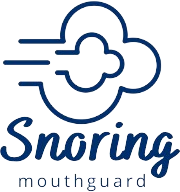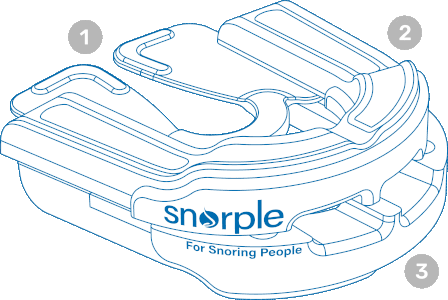No More Night Time Noise
SnoringMouthGuard's Promise to Peaceful Nights
Updated 02/01/2024

Jane Lexington
Editorial Director
Methodology
Up-to-Date
Numerous individuals, along with their partners, endure sleep disruptions caused by persistent snoring. This common issue arises when the muscles and tissues in the mouth and throat reach a state of excessive relaxation, leading to vibrations as air passes through, resulting in the distinctive snoring noise. Apart from being a nuisance, snoring may signal underlying medical conditions.
For those seeking relief from snoring, specially designed mouthpieces prove effective. These devices, often referred to as mouthguards, broadly fall into two categories. Mandibular Advancement Devices (MADs) are inserted into the mouth, pushing the lower jaw forward to widen the airway. Tongue Retaining Devices (TRDs) secure the tongue, preventing it from collapsing into the throat, a common cause of snoring for those who sleep on their backs.
Our Verdict – Identifying the Top Anti-Snoring Mouthpiece
In the pursuit of the best anti-snoring mouthpiece, prioritizing comfort is essential. Finding a product that not only fits the mouth but also caters to individual needs can be challenging. Our top recommendation is the Snorple anti snoring mouthpiece, known for its boil-and-bite molding and complete lateral adjustment features. These attributes enable users to tailor the mouthpiece to their specific mouth shape, ensuring optimal comfort and effectiveness.
Top Picks Overview
Best Anti-Snoring Mouthpieces and Mouthguards Video
Watch the video below to learn more about our top picks for anti-snoring mouthguards.
Our Recommendations
Best Overall Anti snoring mouthpiece

Snorple
Use this button for the most current Snorple discount

Price:
$79

Mouthpiece Type:
Mandibular advancement device (MAD)
Pros
- Adjustable in 2mm increments up to 6mm
- Custom fit through boil-and-bite molding
- Full lateral movement
- Prevents Tongue and Jaw Snoring
Cons
- 30-night sleep trial is shorter than some competing mouthguards
- Some MADs may cause some drooling
The Snorple mouthguard stands out from other over-the-counter models thanks to its advanced adjustability. Compared to many anti-snoring devices, this level of customization is hard to come by. The enhanced lateral movement is another perk, since it’s meant to make the mouthguard much less cumbersome than competing mouthguards.
Most Snoring mouthguards only prevent jaw snoring whereas Snorple prevents both tongue and jaw caused snoring.
Introducing Snorple, a revolutionary mandibular advancement device (MAD) expertly crafted to stop snoring in its tracks. Snorple utilizes a dual-action approach, targeting both jaw and tongue-induced snoring. The device stands out for its precise adjustability, allowing you to fine-tune the fit in 2mm increments, ensuring maximum comfort and effectiveness.
Snorple’s innovative design simplifies the molding process. Unlike traditional methods that require boiling in a pot, Snorple can be easily prepared in a microwave. Simply heat a cup of water to boiling, then immerse the Snorple – complete with its convenient fitting handle – ensuring full submersion for exactly 60 seconds. Afterward, quickly cool it in a cup of tap water for two seconds before biting down for 30 seconds, creating a perfect impression of your upper and lower teeth.
What sets Snorple apart is its comprehensive lateral adjustment feature. Each side of the device is marked with 1mm increments up to 6mm, accompanied by an indicator arrow for your current setting. Effortlessly squeeze the upper tray on both sides to alter the advancement level, ensuring symmetry on both sides. For optimal results, we recommend trying each setting for at least 3 to 5 nights before making adjustments, with most users finding their ideal setting between 3mm and 5mm.
Snorple is not only effective but also affordable. It is priced competitively, lower than the average MAD on the market. Each purchase comes with a 30-night trial, including a full refund option (excluding shipping charges). We are proud to offer shipping to the U.S., Canada, Australia, and most European Union countries. Say goodbye to sleepless nights and hello to peaceful rest with Snorple, your ultimate solution to snoring.
Anti snoring mouthpiece with boil and bite customization No Adjustability
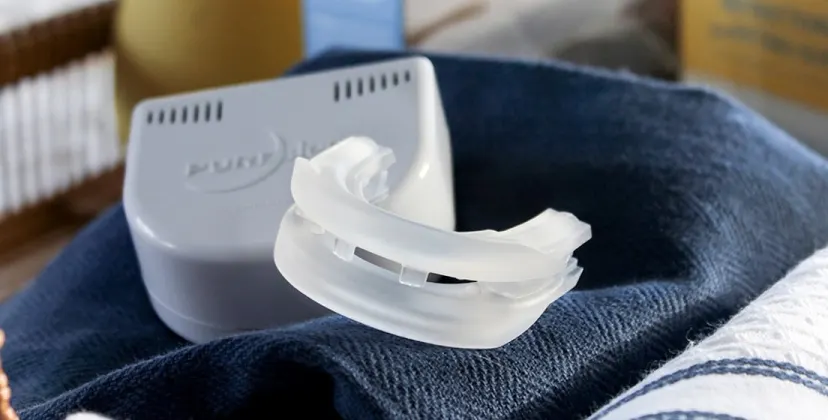
PureSleep Anti-Snoring Dental Device
4.5

Price:
$60

Mouthpiece Type:
Mandibular advancement device (MAD)
Pros
- Boil-and-bite design allows quick and easy customization
- Standard bite, underbite, and overbite fit options
- All orders include a 60-night trial
Cons
- Mouthpiece must be exchanged if first molding doesn’t fit
- Some MADs can cause dry mouth
The PureSleep Anti-Snoring Dental Device exemplifies personalized comfort and adaptability as a boil-and-bite mouthpiece. It is engineered to offer a high degree of customizability, featuring multiple bite settings accompanied by comprehensive instructions. This meticulous design approach ensures that users can attain an optimal fit, uniquely tailored to the specific dimensions of their mouth for maximum effectiveness.
The PureSleep Anti-Snoring Dental Device is designed for effortless customization, catering to the unique contours of your mouth. This boil-and-bite mouthpiece differentiates itself from others on the market by offering customizable options for various bite types.
Constructed with a durable hard plastic exterior and a softer inner material, the device strikes an ideal balance between comfort, robustness, and longevity. Its versatile design allows users to configure the upper and lower pieces to accommodate standard bites, overbites, or underbites – a feature that sets it apart from many competitors that typically provide only a single bite setting. To create a personalized mold, simply immerse the device in boiling water and then bite down, ensuring a precise fit. The process is further simplified with the inclusion of an illustrated booklet, guiding you through each step for a hassle-free fitting experience. Additionally, the mouthpiece comes with a convenient storage case.
The PureSleep Anti-Snoring Dental Device also offers an appealing purchasing experience. Shipping is complimentary, and the product comes with a 60-day trial period. Should you find the mouthpiece unsatisfactory, a full refund is available with the convenience of a prepaid shipping label for returns.
Anti snoring mouthpiece with boil and bite customization No effect on tongue snoring
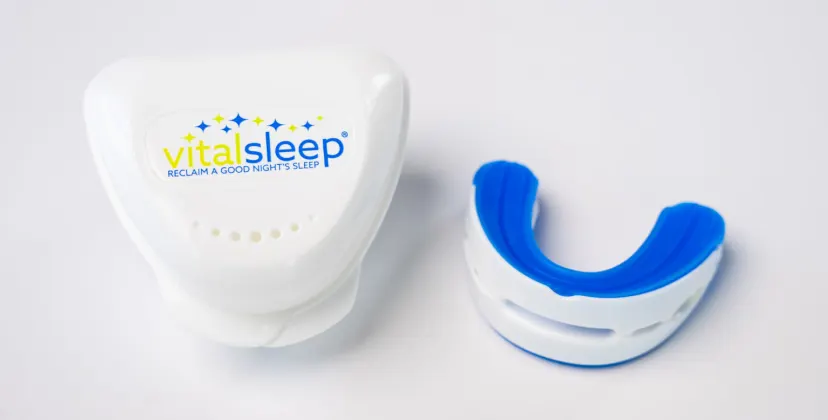
VitalSleep Anti-Snoring Mouthpiece
4.7
Use this link for the most current VitalSleep discount.

Price:
$70

Mouthpiece Type:
Mandibular advancement device (MAD)
Pros
- Adjustable in 1mm increments up to 8mm
- Boil-and-bite customization
- Free adjustment tool included with purchase
Cons
- Drooling may occur with some MAD devices
- Sleepers with small mouths may have trouble keeping lips closed
Presenting the advanced mandibular advancement device (MAD) mouthpiece, distinguished by its exceptional customization capabilities. Engineered for precision, this device allows for an adjustment of jaw placement up to 8mm, catering to individuals who require more than what traditional MADs offer. This feature positions our MAD mouthpiece as a highly attractive option for those seeking tailored solutions in managing snoring and sleep apnea.
The VitalSleep represents a significant advancement in mandibular advancement devices (MADs), setting a new standard in customization. This innovative mouthpiece employs a boil-and-bite approach, featuring a top and bottom layer of pliable thermoplastic material. Users can easily mold the device to their unique dental structure by boiling it in water and then biting into the softened material, ensuring an optimal fit tailored to the individual contours of their teeth and gums.
Beyond its customizable mold, the VitalSleep offers incremental adjustments in 1 millimeter (mm) increments, up to a total of 8mm. This feature enables a broad range of users to achieve a comfortable fit, accommodating various lower jaw configurations. Included with the device is a precision tool to adjust the lower tray, thereby advancing the jaw position to enhance the user’s airway for improved respiration during sleep. The VitalSleep is available in two sizes: a standard version and a slightly smaller variant, approximately 10% smaller, designed specifically for women. It is also hypoallergenic and free from latex and bisphenol A (BPA) plastics, ensuring safety and comfort.
Pricewise, VitalSleep is competitively positioned, offering more affordability compared to the average MAD. The company provides complimentary global delivery, with the promise of same-day dispatch. Customers can expect to receive their VitalSleep swiftly, often within two days, although delivery times may be extended for rural or remote areas. Furthermore, VitalSleep is backed by a 60-night sleep trial and a comprehensive 1-year warranty, which includes free replacements within the coverage period. This level of customer assurance is unparalleled, especially when compared to competing MADs, which often have shorter trial periods and lack warranty coverage.
VitalSleep thus emerges not just as a product of superior design and functionality, but also as a commitment to customer satisfaction and trust.
Anti snoring Tongue Suction Restraint System
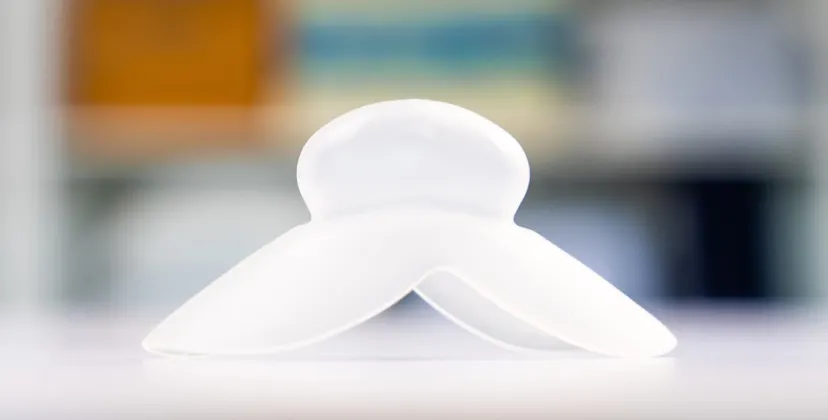
Good Morning Snore Solution
4.6
Use this link for the most current GMSS discount.

Price:
$100

Mouthpiece Type:
Mandibular advancement device (MAD)
Pros
- Lightweight and compact design
- Universal fit with no adjustment needed
- Gentle on the jaw
Cons
- Cannot be customized to your mouth
- Stomach sleepers may feel uncomfortable with device protruding from the mouth
The Good Morning Snore Solution has been meticulously crafted to offer enhanced comfort compared to other tongue-retaining devices available in the market. This device is distinguished by its gentler suction mechanism, specifically designed to be softer and more accommodating around the tongue. Additionally, it boasts a remarkably lightweight construction, contributing to its overall ease of use and comfort during sleep.
The Good Morning Snore Solution stands out as an exceptionally lightweight anti-snoring mouthpiece, designed with a universal fit in mind. Its pear-shaped design incorporates a small slot to comfortably accommodate the tongue. The device employs a gentle suction technique to securely hold the tongue in place, preventing it from obstructing the airway at the back of the throat – a prevalent cause of snoring. This feature makes it particularly beneficial for back sleepers.
To achieve optimal effectiveness, the manufacturer recommends placing the device’s thin flange between the lower lip and teeth. The next step involves extracting air from the slot while pinching the rounded area. As you cease squeezing, insert your tongue into the device, allowing it to fill the slot comfortably. The protruding rounded part of the mouthpiece may pose a challenge for stomach sleepers and initial difficulty in swallowing for some users. Nevertheless, numerous individuals report a significant reduction in snoring episodes by stabilizing the tongue, rather than repositioning the jaw. To remove the device, simply pinch the rounded part and gently withdraw your tongue.
The Good Morning Snore Solution and other Tongue Retaining Devices (TRDs) are particularly suitable for individuals who are unable to use a Mandibular Advancement Device (MAD), including those with dentures, braces, dental implants, or those experiencing temporomandibular joint dysfunction (TMJ) and other jaw-related discomforts. TRDs have also been shown to be effective in reducing teeth grinding. Priced at approximately $90 for a single device, with an option to purchase a two-piece bundle for $130, the Good Morning Snore Solution offers affordability. Additionally, it comes with a 30-night sleep trial, providing assurance and satisfaction for its users.
Anti snoring mouthpiece without boil and bite customization
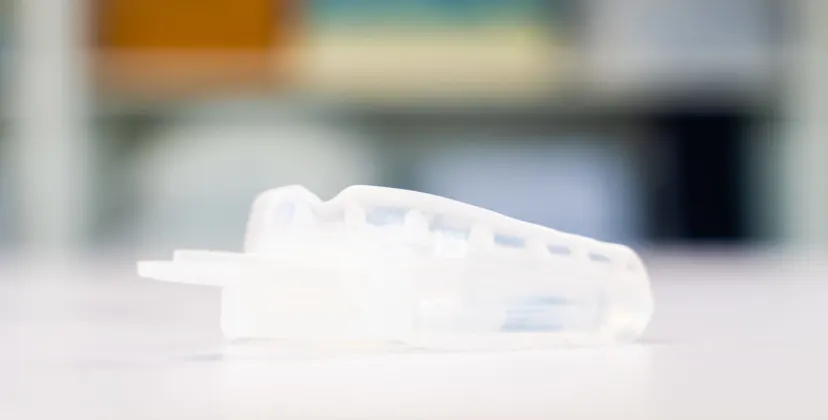
SleepTight Mouthpiece

Price:
$80

Mouthpiece Type:
MAD/TRD combination device
Pros
- Customizable design can be refitted as needed
- Does not contain any latex or BPA
- Customers can test out the mouthpiece for 30 nights before completing their purchase
Cons
- Requires a prescription
- Can cause dry mouth
The SleepTight mouthpiece presents itself as a versatile solution suitable for a broad spectrum of sleepers, thanks to its innovative hybrid design. This device adeptly combines the functionalities of adjusting jaw placement and securing the tongue, effectively aiding in opening up the airway. Its design makes it an excellent alternative for individuals who have not found success with traditional Mandibular Advancement Devices (MADs) or Tongue Retaining Devices (TRDs), offering a new approach to improving sleep quality and reducing snoring.
The SleepTight Mouthpiece offers a unique approach for those seeking a customized anti-snoring solution. Unlike most anti-snoring mouthpieces that require full payment upfront, the SleepTight Mouthpiece provides a 30-night trial period. This allows buyers to thoroughly test and evaluate the mouthpiece’s effectiveness before committing to a purchase. A nominal trial fee is charged initially, with the option to fully purchase the mouthpiece only after the trial period concludes.
As a combination anti-snoring device, the SleepTight Mouthpiece is designed to reposition the jaw and advance the tongue, effectively reducing snoring. It features a substantial 6mm front airway, catering to mouth breathers during sleep. Additionally, this opening aids in passive tongue retention, further helping to clear the airway. While the jaw advancement is pre-set to 5mm, adjustments can be made for increased relief based on individual needs during initial usage. Importantly, the mouthpiece is free from latex and BPA materials, ensuring safety and comfort.
Should you choose to proceed with the SleepTight Mouthpiece after the trial, its total cost remains competitively lower than the average price of customizable Mandibular Advancement Devices (MADs). The initial trial fee conveniently includes shipping costs for all U.S. orders, making it an attractive and cost-effective option for those exploring anti-snoring solutions.
Anti snoring mouthpiece without boil and bite customization
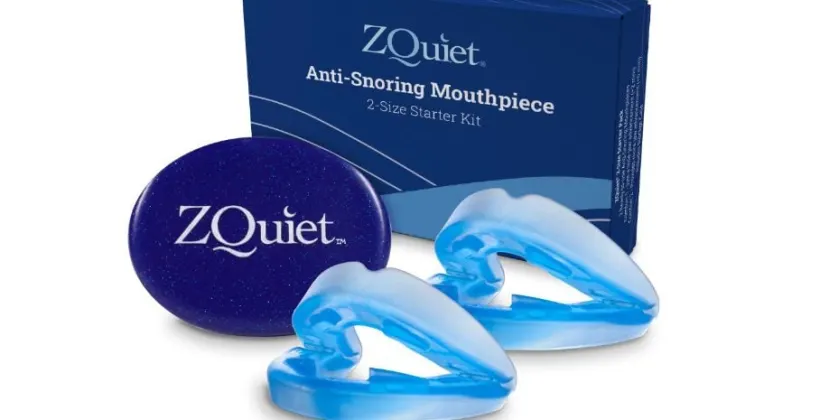
ZQuiet Anti-Snoring Mouthpiece 2-Size Starter Pack
4.9
Use this link for the most current ZQuiet discount.

Price:
$70

Mouthpiece Type:
Mandibular advancement device (MAD)
Pros
- Hinged design
- Thin profile enhances airflow for easier breathing
- Set comes with two devices with different degrees of jaw advancement
Cons
- Does not offer instant customizability, as with a boil-and-bite mouthpiece
- Needs to be replaced every 3-6 months, which is more frequent than some competing mouthguards
Should you find that traditional boil-and-bite mouthpieces have not met your expectations, the ZQuiet may offer a more suitable alternative. Its automatic adjustment feature is a noteworthy enhancement, providing a seamless experience. Additionally, the innovative hinged design of the ZQuiet allows for greater flexibility and freedom of movement in the jaw area, potentially enhancing comfort and usability.
The ZQuiet represents a significant advancement in the realm of mandibular advancement devices (MADs), departing from the traditional boil-and-bite approach. This innovative device features a hinged design that connects the upper and lower trays, enabling it to automatically conform to the unique dimensions of your mouth and jaw upon insertion. This intuitive feature streamlines the user experience, making the ZQuiet notably straightforward and comfortable to use in comparison to other anti-snoring mouthpieces. Additionally, the absence of a boil-and-bite mold facilitates enhanced lateral movement, and the device’s slender profile ensures consistent airflow for easier breathing.
With the purchase of ZQuiet, you will receive two individual devices. These variants offer different degrees of jaw advancement—one at 2mm and the other at 6mm—allowing you to choose the one that best suits your comfort, or alternate between them as needed. Constructed entirely of soft thermoplastic, the ZQuiet is free from latex and BPA plastics, ensuring safety and comfort. Each purchase also includes storage containers to maintain the cleanliness and hygiene of the devices.
The ZQuiet set is competitively priced within the MAD market, particularly considering the versatility of using both devices interchangeably. The company extends a 60-night guarantee, providing customers the option to return the mouthpiece for a full refund if not completely satisfied. For optimal performance, ZQuiet recommends replacing the device(s) every six months. Shipping is available across the U.S. and to numerous international locations, with both standard and expedited options. Orders placed before 11am Eastern Standard Time are dispatched the same day, ensuring prompt delivery.
Why You Can Trust Us
Our evaluation team comprises seasoned experts in sleep products, each bringing years of dedicated experience in researching and assessing a wide range of items in this category. In our comprehensive testing process, we meticulously examined over a dozen anti-snoring mouthpieces and mouthguards. This rigorous selection process led us to identify our top picks, which encompass both mandibular advancement devices (MADs) and tongue-retaining devices (TRDs). This careful curation ensures that our recommendations are based on thorough testing and expert insights.
How We Evaluated These Mouthguards and Mouthpieces
Our evaluation methodology entailed each tester using the mouthpieces during sleep for a minimum of one night. Priority was given to feedback from individuals who experience occasional or frequent snoring, as their insights were particularly valuable in assessing the effectiveness of the devices. Testers who do not typically snore contributed valuable input regarding other critical aspects, such as the ease of customization and the overall comfort of the mouthpieces. The selections presented as our top picks are a culmination of the collective insights and findings of our experienced testing team.
Compare All Anti-Snoring Devices
| Brand | Model | Type | Full Review | Price |
|---|---|---|---|---|
| AirSnore | AirSnore | Mandibular advancement device (MAD) | Read Our Review | $53 |
| Good Morning Snore Solution | Mouthpiece | Tongue retaining device (TRD) | Read Our Review | $100 |
| PureSleep | PureSleep Anti-Snoring Dental Device | Mandibular advancement device (MAD) | Read Our Review | $60 |
| Smart Nora | Smart Nora | Pillow-adjustment snoring solution | Read Our Review | $399 |
| SnoreRx | Plus | Mandibular advancement device (MAD) | Read Our Review | $100 |
| SnoreRx | SnoreRx | Mandibular advancement device (MAD) | Read Our Review | $60 |
| Somnifix | Mouth Strips | Pillow-adjustment snoring solution | Read Our Review | $24 |
| VitalSleep | VitalSleep | Mandibular advancement device (MAD) | Read Our Review | $70 |
| ZQuiet | ZQuiet | Mandibular advancement device (MAD) | Read Our Review | $70 |
| Zyppah | Zyppah | MAD/TRD combination device | Read Our Review | $130 |
Brand
Model
Type
Full Review
Price
$60
How to Choose an Anti-Snoring Mouthpiece or Mouthguard
When selecting an anti-snoring mouthpiece, also referred to as a mouthguard, the primary factor to consider is your preference between the manual jaw advancement offered by a Mandibular Advancement Device (MAD) and the tongue-restraining suction provided by a Tongue Retaining Device (TRD). It is important to note that an adaptation period may be necessary as you acclimate to the sensation of these devices, particularly during sleep.
The price range for most over-the-counter MADs and TRDs currently on the market varies between $50 and $150 per unit. It is advisable to consult with a healthcare professional prior to purchasing one of these devices. This consultation can help determine which type of device is most appropriate for your specific needs. Additionally, medical experts can offer valuable recommendations and guidance regarding the models that are most effective.
Who Should Consider an Anti-Snoring Mouthpiece?
Snoring, which affects approximately 90 million adults across the nation, lacks a definitive cure, but effective snoring aids can significantly mitigate the symptoms. For a substantial portion of these individuals, snoring is a persistent issue, occurring chronically or even nightly.
The root cause of snoring is typically obstructed airflow through the respiratory passages, which can arise from various factors. A thick or low-hanging soft palate narrows the airway, increasing the likelihood of snoring. Chronic nasal congestion and other related issues also contribute to snoring. Additionally, excess weight or obesity can lead to the accumulation of tissue around the airway, further exacerbating the problem.
Alcohol consumption is another common factor in snoring. Drinking before bedtime can overly relax the throat muscles, causing the tongue to obstruct the airway. Likewise, exhaustion or sleep deprivation can lead to similar relaxation of the throat muscles. Moreover, sleeping on one’s back tends to increase snoring risk due to the potential for the tongue to block the airway.
Chronic snoring can lead to a host of complications, including daytime fatigue, mood fluctuations, difficulty concentrating, and an elevated risk of accidents, both vehicular and occupational. For individuals experiencing snoring issues unrelated to sleep apnea, mandibular advancement devices (MADs) and tongue retaining devices (TRDs) can effectively reduce snoring episodes. These devices offer a more cost-effective solution compared to upper airway surgeries and other medical interventions for snoring. However, it is crucial to consult a healthcare professional before purchasing or trying an MAD or TRD for the first time.
While many find anti-snoring mouthpieces and mouthguards beneficial, they may not be suitable for everyone. Some users report discomfort or even pain, and in cases of severe conditions like obstructive sleep apnea, these devices may not provide adequate relief.
How Do Anti-Snoring Mouthpieces Work?
Despite their proven efficacy in alleviating snoring for numerous individuals, anti-snoring mouthpieces are fundamentally straightforward devices, characterized by a minimalistic design with few individual components. Their operational mechanism varies based on whether the mouthpiece is a Mandibular Advancement Device (MAD) or a Tongue Retaining Device (TRD).
Mandibular Advancement Devices (MADs) are the most commonly used type of anti-snoring mouthpiece. Typically, these devices feature thermoplastic material in the upper and lower trays, precisely contoured to accommodate the user’s teeth. When exposed to boiling water, the thermoplastic softens, allowing the user to bite into both trays and create a custom mold. The standard “boil-and-bite” process generally follows these steps, unless otherwise instructed by the device’s guidelines:
Preliminary Fitting: Before boiling, test the fit of the mouthpiece by gently biting down onto the thermoplastic in the upper and lower trays. A well-fitting device should closely approach the lips, approximately within a few millimeters.
Adjusting Tray Ends: Depending on the specific model, you may need to trim the ends of the upper and lower trays for a proper fit. This step is not necessary for all devices.
Boiling Water Preparation: Boil water either in a stovetop pot or a microwave-safe cup, as per the instructions. Once boiled, transfer the water to a non-heated surface, ensuring there’s enough water to fully submerge the mouthpiece.
Submerging the Mouthpiece: Immerse the mouthpiece in the boiled water for the time specified in the directions, typically ranging from 30 to 60 seconds.
Cooling Phase: Some models may require a brief immersion in cold water. Most, however, will be ready for molding immediately, though it’s advisable to let the thermoplastic cool slightly before biting.
Creating the Mold: Place the device in your mouth and bite down firmly with your upper and lower teeth. The thermoplastic should be warm but not excessively hot. Ensure your tongue is pressing against the roof of your mouth, aiding in drying off the mouthpiece.
Re-molding if Necessary: Should the initial mold be less than satisfactory, the procedure can be repeated. The thermoplastic is designed to soften sufficiently for multiple attempts.
Upon successful molding, a Mandibular Advancement Device (MAD) will advance the jaw by a minimum of 1mm when correctly positioned with your teeth in the upper and lower trays. For models that offer customization, manual adjustments can be made in 1mm increments, ensuring the jaw advancement is comfortably tailored to individual needs. Alternatively, certain MAD models incorporate a flexible hinge mechanism that automatically adjusts, conforming to the unique shape of your jaw and mouth. This forward advancement of the jaw is crucial in widening the breathing passages, thereby facilitating smoother air flow and significantly reducing the likelihood of snoring.
Tongue Retaining Devices (TRDs) employ a more simplistic design. Resembling the pacifiers used for babies and infants, most TRDs feature flanges that gently press against the inner folds of your upper and lower lips, along with a designated opening for the tongue. This opening is designed to be relatively narrow to create suction, effectively maintaining the tongue in a forward position within the mouth, away from the back of the throat. As TRDs are typically designed for a universal fit, they eliminate the need for boil-and-bite molding or further customization.
Types of Anti-Snoring Mouthpieces: MADs vs. TRDs
Having delineated the operational mechanisms of Mandibular Advancement Devices (MADs) and Tongue Retaining Devices (TRDs), we now turn our attention to a comparative analysis of these anti-snoring mouthpieces. While both MADs and TRDs offer significant potential in reducing snoring episodes, they each present a unique set of advantages and disadvantages that may cater differently to the needs of various sleepers.
TRDs
| Pros | Cons |
|---|---|
| TRDs are designed for a universal fit, so you won’t need to follow boil-and-bite molding steps | Due to their one-size-fits-all designs, most TRDs cannot be customized to a particular setting |
| Compared to MADs, TRDs tend to be lighter and more compact | Unlike MADs, TRDs do not prevent bruxism because they do not separate the teeth |
| On average TRDs cost less than MADs | TRDs may restrict breathing through the mouth |
| Since the device does not protrude from the mouth, an MAD can be used with any sleep position | Side effects may include dry mouth and drooling |
Pros
Cons
- TRDs are designed for a universal fit, so you won’t need to follow boil-and-bite molding steps
- Due to their one-size-fits-all designs, most TRDs cannot be customized to a particular setting
- Compared to MADs, TRDs tend to be lighter and more compact
- Unlike MADs, TRDs do not prevent bruxism because they do not separate the teeth
- On average TRDs cost less than MADs
- TRDs may restrict breathing through the mouth
- Since the device does not protrude from the mouth, an MAD can be used with any sleep position
- Side effects may include dry mouth and drooling
MADs
| Pros | Cons |
|---|---|
| Boil-and-bite molding creates a customized impression of your upper and lower teeth | A prescription may be required for certain MAD models |
| Many MADs can be adjusted for different advancement levels | These mouthpieces carry more potential side effects, including jaw pain and stiffness, drooling, and dry mouth |
| Advancing the jaw allows users to breathe through their mouths rather easily | Certain sleepers should not use MADs. These include people with braces, dentures, dental implants, or cracked or broken teeth. People with TMJ and other jaw discomfort issues should also avoid MADs, as they can aggravate the pain. |
| Since the device does not protrude from the mouth, an MAD can be used with any sleep position | While still considered affordable for most shoppers, MADs tend to cost more than TRDs |
| In addition to snoring, MADs can also minimize nighttime bruxism (or teeth-grinding) |
Pros
Cons
- Boil-and-bite molding creates a customized impression of your upper and lower teeth
- A prescription may be required for certain MAD models
- Many MADs can be adjusted for different advancement levels
- These mouthpieces carry more potential side effects, including jaw pain and stiffness, drooling, and dry mouth
- Advancing the jaw allows users to breathe through their mouths rather easily
- Certain sleepers should not use MADs. These include people with braces, dentures, dental implants, or cracked or broken teeth. People with TMJ and other jaw discomfort issues should also avoid MADs, as they can aggravate the pain.
- Since the device does not protrude from the mouth, an MAD can be used with any sleep position
- While still considered affordable for most shoppers, MADs tend to cost more than TRDs
- In addition to snoring, MADs can also minimize nighttime bruxism (or teeth-grinding)
Anti-Snoring Mouthguard Considerations
Mandibular Advancement Devices (MADs) and Tongue Retaining Devices (TRDs) both aim to achieve a similar outcome, primarily the reduction of snoring, albeit through entirely distinct methods and mechanisms. In selecting the most suitable type of anti-snoring mouthpiece for your needs, it is important to weigh a variety of factors to make an informed decision.
- Customization: Mandibular Advancement Devices (MADs) provide a greater scope for customization. Predominantly featuring a boil-and-bite design, these mouthpieces incorporate trays filled with thermoplastic material, enabling users to craft a bespoke mold tailored to their dental structure. In contrast, Tongue Retaining Devices (TRDs) typically do not necessitate or facilitate such customization. While most TRDs are designed with a universal fit in mind, certain models are available in various sizes to suit the diverse needs of different sleepers.
- Quality Material: The majority of Mandibular Advancement Devices (MADs) and Tongue Retaining Devices (TRDs) are constructed from materials such as silicone resin, plastic, or a blend of both. Boil-and-bite MADs typically consist entirely of moldable thermoplastic, or they may incorporate this material solely in the upper and lower trays. Contemporary manufacturing standards for most anti-snoring mouthpieces ensure the exclusion of latex and BPA plastic. Generally, these devices have a lifespan ranging from 6 months to 2 years, after which replacement is recommended for optimal effectiveness.
- Comfort: Individual preferences vary significantly when it comes to anti-snoring devices, with some sleepers favoring the jaw-advancing functionality of a Mandibular Advancement Device (MAD) over the tongue-retaining suction offered by a Tongue Retaining Device (TRD), and vice versa. To ascertain which type of device provides the most comfort and effectiveness for your specific needs, it may be beneficial to experiment with both options. In this context, opting for models that offer sleep trials could be particularly advantageous. Ultimately, it is advisable to consult with a healthcare professional regarding MADs and TRDs to gain insights into the most suitable choices for your situation, and then proceed accordingly.
- Adjustability: Certain Mandibular Advancement Devices (MADs) offer the capability for users to manually fine-tune the extent of jaw advancement. These devices typically allow adjustments in precise 1mm increments. Conversely, other MAD models do not provide manual adjustment options. Instead, they are equipped with hinge mechanisms that automatically adapt to the user's mouth dimensions. In the case of Tongue Retaining Devices (TRDs), due to their inherent design, they do not facilitate any form of adjustment.
- Ease of Cleaning: For best results, we recommend rinsing your anti-snoring mouthpiece in hot water after each use. If you use an MAD, you should regularly scrub the upper and lower trays to prevent bacterial buildup. Some brands offer proprietary cleaning solutions for their MADs. Toothpaste and a toothbrush may also work. If you use a TRD, be sure to clean the interior of the tongue opening. Many anti-snoring mouthpieces come with protective cases; if not, make sure the device is stored in a clean environment when not in use.
- Prescription Requirements: Many anti-snoring mouthpieces are available over the counter. For some devices, you’ll need approval from your doctor or dentist and a prescription. Most prescription anti-snoring appliances are MADs custom-fitted for your upper and lower teeth using dental impressions. You’ll obtain the device through your dentist, and visit for routine checkups to ensure the mouthpiece fits and works properly.
How Expensive Are Anti-Snoring Mouthguards?
Anti-snoring mouthpieces typically cost between $50 and $150 apiece. MADs are a bit more expensive, with an average price range of $75 to $150 per device. Most TRDs cost $100 or less. Free shipping may or may not be available, depending on the manufacturer’s delivery policy, but full refunds are usually granted if returns are allowed. Some brands also offer their mouthguards at a discounted rate if you purchase two or more at once.
$50 to $150 might sound expensive for a device that will, in all likelihood, need to be replaced within two years. However, anti-snoring mouthpieces cost much less than upper airway surgery and other medical procedures intended to treat snoring symptoms.
Other Important Concerns About Anti-Snoring Mouthguards
Are they safe for everyone?
Anti-snoring mouthguards are generally considered safe, but you should always consult your doctor before trying one for the first time.
Because they physically advance the jaw forward, MADs can lead to temporomandibular joint (TMJ) disorder, which is characterized by pain in the jaw and its surrounding muscles. MADs and TRDs may also cause pain and irritation to the teeth and gums, especially if the device is not custom molded.
It’s imperative to keep your anti-snoring mouthpiece clean. Sterilize with hot water after each use and clean the device regularly to prevent the buildup of harmful bacteria.
Before purchasing a device, carefully research the top models on your list to see if there have been any known defects or safety issues associated with those products. You can also reach out to customer service personnel to inquire about potential safety concerns.
How important is certification and what should I look for?
Under the U.S. Food and Drug Administration (FDA), MADs, TRDs, and other “intraoral devices for snoring and/or sleep apnea” are considered Class II medical devices. This means they present some risk to users because they come in direct contact with the body. As such, the FDA regulates the sale and distribution of these devices. Mouthpieces must be thoroughly tested and proven to be effective before the FDA will clear them for sale. Any device you buy should carry a “cleared by FDA” label.
Do I need a prescription?
Most anti-snoring mouthpieces can be sold over the counter and do not require a prescription. However, you will need a prescription for certain MAD and TRD models, as well as some advanced custom mouthpieces. Prescription requirements, if any, will typically be listed on the online product pages for these devices.
How does custom fitting work?
Most MAD mouthpieces are designed for boil-and-bite customization. Simply submerge the device in boiled water to soften the thermoplastic in its upper and lower trays, then remove, cool, and bite down on both thermoplastic layers. (Specific instructions vary by model.)
For more expensive custom mouthpieces, you may be asked to make a thermoplastic mold at home and mail the sample to the manufacturer, who will then produce a device custom-fitted to your teeth and jaw.
Some MADs use hinges and other mechanisms to automatically adjust to your mouth, so customization is not needed. Since TRDs have a one-size-fits-all design, these devices are generally not customizable.
Can I wear it with dentures?
If you wear dentures, you should avoid using MAD mouthguards. These devices physically move the jaw forward. In doing so, they can interfere with dentures – and in some cases, dislodge them. MADs are not recommended for people who have dental implants or loose teeth, either. TRDs, on the other hand, do not mold to the teeth and are perfectly denture-friendly (though you should first check with your doctor to make sure these devices are right for you).
Do mouthguards prevent bruxism (teeth grinding)?
MADs can prevent, or at least minimize, nighttime teeth grinding. These devices have upper and lower trays to hold and separate the teeth. Assuming the device is properly fitted, it will keep your upper and lower teeth in place and prevent them from coming into contact with one another.
TRDs do not separate the teeth, and there is no evidence they reduce nighttime teeth grinding.
How do I clean my mouthpiece?
Cleaning instructions vary by model, but you’ll want to sterilize the mouthpiece with hot water after each use. Regularly scrub the device with a cleaning solution to prevent bacterial buildup. You’ll also want to store the mouthpiece in your bathroom cabinet, or another relatively cool place where it won’t be exposed to excessive heat or moisture. Many MAD and TRD manufacturers offer a protective case for their devices.
Do mouthguard manufacturers offer returns? What about warranties?
Anti-snoring mouthpieces often come with a sleep trial of 30 to 60 nights. This allows you to use the device for at least 1 month before deciding whether to keep it or return it for a refund. Shipping charges are usually non-refundable.
Warranties are less common, but some MAD and TRD models are backed by some sort of manufacturer’s guarantee. In most cases, the warranty will cover the device for up to 1 year.
Additional Snoring Solutions and Products
CPAP, BiPAP, and APAP
Sleep apnea is a condition characterized by temporary loss of breath during the night, as well as heavy snoring. Obstructive sleep apnea (OSA) is caused by a physical obstacle blocking the airway, such as the tongue or abnormal tissue buildup, while central sleep apnea (CSA) occurs when the brain cannot transmit signals to muscles that promote breathing.
For people with sleep apnea, positive air pressure (PAP) therapy can reduce the frequency and severity of their nighttime episodes. This therapy involves a machine that draws in outside air using a fan, humidifies and pressurizes the air, and then delivers it to the user through a connective hose and a face mask that covers the mouth and/or nostrils. There are three common types of PAP therapy.
- During continuous positive air pressure (CPAP) therapy, the machine delivers air to its user at one prescribed pressure rate. CPAP is most effective at treating OSA.
- For bi-level positive air pressure (BiPAP) therapy, the pressure toggles between a lower rate for inhalation and a higher rate for exhalation, which can make breathing easier for some people.
- Unlike the other two, automatic positive air pressure (APAP) does not follow a fixed pressure schedule. Instead, the machine adjusts pressure levels based on the user’s breathing patterns. APAP can be effective for both OSA and CSA.
PAP therapy machines, humidifiers, and face masks all require a doctor’s prescription. Consult your physician to learn more if you experience sleep apnea symptoms.
Alternate Devices
MADs and TRDs are not the only devices you can use to combat snoring. Another example is Provent, a device primarily used to treat sleep apnea symptoms. Provent consists of two air filters placed inside each nostril. This relatively non-invasive device may reduce snoring episodes by a significant extent, but you’ll need a doctor’s prescription to purchase Provent.
For more severe cases of snoring, a palatal lift prosthesis may be another option. These prostheses are used to treat palatopharyngeal incompetence, a condition characterized by difficulty closing the nasal passages when speaking or swallowing. This can lead to obstructive sleep apnea, and with it, chronic snoring. As the name implies, the prosthesis elevates the soft palate to widen the airway and promote better circulation. You’ll need to undergo a medical procedure to have the prosthesis installed, so this may not be your most cost-effective option.
Surgery
According to the Mayo Clinic, serious snoring may necessitate a surgical procedure. Several procedures can be used to mitigate snoring symptoms. These include uvulopalatopharyngoplasty, during which surgeons remove tissue from the back of your throat to broaden the airway. A similar procedure, radiofrequency tissue ablation, involves a low-intensity signal that decreases tissue around the palate, throat, and tongue. A third option is maxillomandibular advancement surgery, which permanently moves the upper and lower jaws.
Medical researchers continue to discover new treatment methods. One of the more recent innovations is hypoglossal nerve stimulation. For this procedure, surgeons essentially reprogram the nerves that control your tongue’s movements in order to prevent airway blockage.
Surgery can be very expensive, even with health insurance. You should consider any of these procedures as a last resort for snoring treatment.
Pillow Loft and Adjustable Beds
Back sleepers are more susceptible to snoring than those who use other sleep positions because the tongue is likely to fall into the back of the throat and block the airway. For some back sleepers, more pillow loft (or thickness) is needed to elevate the head and keep the tongue closer to the front of the mouth. If your head tends to fall too far back on your pillow, then you should consider a thicker pillow – or a different sleep position.
Adjustable beds can also be beneficial to snoring back sleepers. These beds can be raised or lowered at the head and foot, allowing you to sleep with your head elevated while the rest of your body lies flush with the bed. The downside: adjustable beds can be quite expensive.
Lifestyle Adjustments
You may experience less snoring by changing your daily and nightly routines. Losing weight can reduce snoring by a significant extent, as being obese or overweight are considered major risk factors. Quitting smoking and cutting down on alcohol consumption – especially before bedtime – can also help you cut down on snoring episodes.
If you experience chronic snoring and normally sleep on your back, then you should consider the side position. The tongue is less likely to fall into the back of the throat while you’re lying on your side. You can also prevent airway blockage by sleeping on your stomach, but this position is associated with more aches and pains, and is generally discouraged.
Lastly, the trick to less snoring might be getting more sleep. If you go to bed feeling sleep deprived, the muscles around your throat will relax more during the night and the potential for airway blockage will be much higher. Most adults should sleep at least 7 to 9 hours each night, including on the weekends.
Frequently Asked Questions
What anti-snoring mouthpiece is right for me?
The best anti-snoring mouthpiece (also known as a mouthguard) depends on your personal preferences. Most mouthguards fall into one of two categories. Mandibular advancement devices (MADs) have upper and lower trays designed to fit around your teeth and physically move the jaw forward, which expands the breathing passage and allows more air to pass through.
MADs are often “boil-and-bite” mouthguards made of thermoplastic. Owners boil them in water, then bite into the thermoplastic to create a customized impression. After the material cools and hardens, the MAD will be ready to use. Other MADs are specifically created using a customer’s dental impressions, and some can later be adjusted for advancement level.
The customized nature of MADs makes them very effective. They also allow sleepers to breathe through their mouths, and a lack of protruding parts means these mouthguards are compatible with any sleep position. However, MADs are associated with more jaw pain and stiffness, drooling, and other negative side effects. Many people – including those with braces or dentures – won’t be able to use them, and a prescription is normally required.
The other type of anti-snoring mouthguard is the tongue-retaining device (TRD), which are designed with flanges that rest against your lips and a small compartment for the tongue. The compartment essentially suctions the tongue in place, preventing it from falling back into the throat – a common source of heavy snoring.
TRDs are lighter and easier to wear than MADs, and not associated with as many adverse effects. They also won’t interfere with dentures or braces, and most don’t require a prescription. However, TRDs usually can’t be customized, and instead have a “one-size-fits-all” design that will serve some sleepers better than others. They can also restrict breathing by forming a seal around the mouth.
Do mouthpieces and mouthguards really stop snoring?
Mouthguards can be very effective for treating heavy snoring, especially custom-fitted models. However, additional remedies can also be helpful. For instance, sleeping on your back and consuming alcohol before bed are two common reasons why people snore. Avoiding the back position and refraining for drinks in the hours before going to sleep can further alleviate snoring if you use a mouthguard.
Some people snore due to a medical condition known as obstructive sleep apnea (OSA), which not only promotes heavy snoring but also causes people to wake up choking or gasping for air throughout the night. While mouthguards can mitigate the snoring issue, a CPAP or BiPAP machine is usually the best form of treatment for people with OSA.
Are mouthguards good for sleep apnea?
Some people with obstructive sleep apnea (OSA) benefit from using an anti-snoring mouthguard. CPAP therapy is widely considered the most effective treatment option for OSA, but a mouthguard can improve airflow and reduce the snoring associated with this sleep disorder. If you have been diagnosed with OSA and CPAP therapy has not been effective, talk to your doctor about anti-snoring mouthguards and other alternative treatments.
Do snoring mouthguards move your teeth?
While snoring mouthguards don’t move your teeth the way braces do, they can change the position of your jaw while you use them. MAD-style mouthguards physically advance your jaw forward to create more room for air to pass through your breathing passages. This can cause discomfort in some sleepers and can lead to TMJ or other irritations. People with dentures, cracked teeth, dental implants, or braces should not use MADs unless directed to do so by a physician.
TRD-style mouthguards create more breathing room by restricting tongue movement rather than altering the position of your jaw. As a result, TRDs are less likely to cause jaw or tooth discomfort. Consult with your doctor before choosing an anti-snoring mouthguard.
Still have questions?
Our product experts have extensive experience testing just about every sleep product on the market. Send an email to AntiSnoringReview@proton.me or call us at 818-495-5182 with your questions and we’ll help you find exactly what you’re looking for.

Written By
Jane Lexington, Editorial Director
Jane is a Certified Sleep Science Coach with extensive knowledge and firsthand experience in dealing with sleep difficulties. Her years of dedication to researching and evaluating sleep products – such as pillows, herbal sleep supplements, and luxurious bed linens – play a pivotal role in guiding the editorial team. As someone who has faced persistent insomnia, her goal is to share her insights with others facing similar sleep challenges. Her proficiency lies in crafting informative, credible, and helpful health content. Outside of her professional pursuits in sleep science, Jane relishes outdoor activities with her partner and her cat, Whiskers.
Our Helping Articles
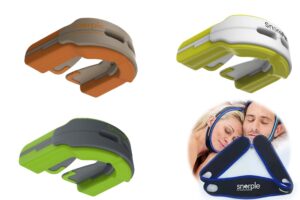
Discover Peaceful Nights with Stop Snoring Mouthpiece
Say goodbye to restless nights and disruptive snoring with our top-rated stop snoring mouthpiece. Find effective solutions to eliminate snoring, enjoy peaceful sleep, and wake up refreshed. Choose the best stop snoring mouthpiece for a quiet and restful night’s sleep
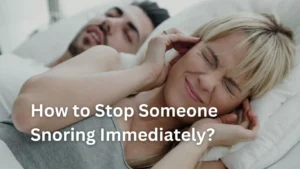
How to Get Someone to Stop Snoring
Discover effective strategies on how to get someone to stop snoring. Explore tips, remedies, and lifestyle changes to alleviate snoring and promote better sleep. Take proactive steps towards a quieter and more restful night with our comprehensive guide.
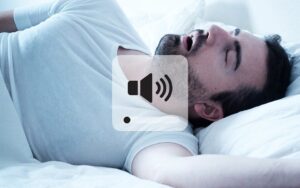
Stop Snoring Solutions: A Guide to Silent Nights
Stop snoring and regain quiet nights with our expert guide. Explore proven remedies, lifestyle adjustments, and anti-snoring devices to address the root causes of snoring. Discover effective solutions for a restful sleep and improved overall well-being.

Snorple Stop Snoring Device Solution for Restful Nights
Discover the power of Snorple’s stop snoring devices – a range of innovative solutions designed for a peaceful night’s sleep. From custom-fit mouthpieces to revolutionary combos, Snorple ensures comfort, durability, and effective snoring relief. Invest in Snorple, embrace tranquility.
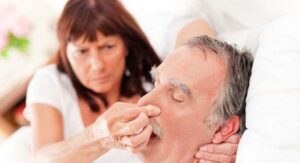
Stop Snoring Naturally: Leads to Silent Nights
Struggling to sleep? Uncover natural solutions in our comprehensive guide on how to stop snoring naturally. From lifestyle adjustments to effective remedies, reclaim restful nights and bid farewell to the disruptions caused by snoring. Discover a holistic approach to peaceful sleep.
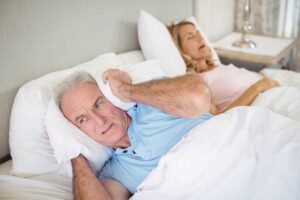
Silence the Night: Effective Strategies on How to Stop Snoring for Women
Discover practical tips and proven methods on how to stop snoring immediately. Explore effective solutions to enjoy a quiet and restful night, addressing the root causes of snoring for better sleep quality.
